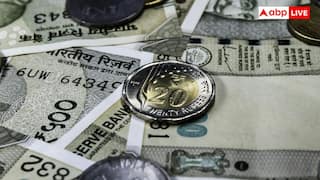Increasing Penetration Of Digital Banking Services In Rural India. Let's Explore
Rural areas, which have traditionally lagged in terms of connectivity and access to essential services, are now receiving significant attention through government initiatives like BharatNet

By Shikhar Aggarwal
India is a country of contrasts, with both bustling metropolises and rural areas with limited access to modern technology. However, the demand for digital banking services is growing rapidly in rural areas, and this trend is being supported by the government's ambitious BharatNet project and the Digital India programme, which aims to pull together many existing schemes. From digital India stems digital banking, which has revolutionised the way people manage their finances by enabling them to access their bank accounts, transfer money, pay bills, and conduct other financial transactions without leaving their homes. This has been particularly important during the Covid-19 pandemic, which limited people's ability to visit physical bank branches.
Over the course of the last half-decade, India's digital terrain has undergone a remarkable metamorphosis, poised to emerge as a fully-fledged digital economy. This evolution has had a profound impact, especially in the rural hinterlands, where conventional banking services have long grappled with constraints that curtailed their reach. The increasing penetration of smartphones and the availability of affordable data plans have created a significant demand for digital banking services among rural Indians. Many of India’s leading banks, such as SBI, HDFC, and Punjab National Bank, amongst others, have expanded their services to include last-mile digital banking for their customers in rural areas. Embarking on an ambitious endeavor, BharatNet has unfolded as one of the grandest rural telecom initiatives globally. Implemented in a well-structured manner across countless Gram Panchayats spanning the nation, this colossal project aims to ensure equitable and non-discriminatory access to broadband connectivity for all telecom service providers.
Furthermore, according to a report by the Boston Consulting Group, digital payments in India are expected to reach $10 trillion by 2025, with much of this growth being driven by rural areas. This represents a massive opportunity for banks and financial technology (fintech) companies to tap into a new and rapidly growing customer base. However, this growth also presents challenges, particularly in terms of infrastructure. Rural areas often lack the high-speed internet connectivity needed to support digital banking services, which can be a major impediment to adoption.
In a world that is becoming increasingly interconnected through technology, bridging the digital divide has become essential for inclusive growth and development. Rural areas, which have traditionally lagged in terms of connectivity and access to essential services, are now receiving significant attention through government initiatives like BharatNet. This ambitious project, combined with the collaboration of corporates and fintech firms, is playing a pivotal role in bringing digital banking services and connectivity to rural India. This article delves into the importance of rural banking and highlights how government-corporate initiatives are empowering rural communities to connect with the world.
Recognizing the importance of rural banking, the government has actively sought the involvement of private sector players to drive financial inclusion initiatives. Corporates, including fintech firms, have stepped up to the challenge, leveraging their expertise to develop innovative solutions tailored to the specific needs of rural customers. Through partnerships with banks and other financial institutions, these entities are creating platforms that offer user-friendly interfaces, simplified account opening processes, and localized language support.
Furthermore, corporate entities have been instrumental in expanding the reach of digital banking services in rural areas. By establishing banking correspondents and self-service kiosks, they are bringing financial services closer to rural communities. These initiatives help bridge the physical distance between rural customers and banking infrastructure, ensuring that individuals in even the remotest regions have access to essential financial services.
The integration of rural communities into the digital economy offers a plethora of benefits. Digital banking services empower individuals to save, invest, and manage their finances efficiently. Access to credit and insurance products provides a safety net during unforeseen circumstances, stimulating entrepreneurship and fostering economic growth in rural areas. Furthermore, digital connectivity facilitates access to education and healthcare services, enabling students to access online educational resources and patients to consult with doctors remotely.
For example, many fintech companies have developed mobile apps that allow users to conduct transactions even in areas with poor connectivity. Others have partnered with local retailers to offer cash deposit and withdrawal services, thereby extending the reach of banking services to remote areas.
The rising demand for digital banking services in rural India presents a significant opportunity for financial institutions to tap into a previously untapped market. The adoption of digital banking services in rural areas is expected to drive financial inclusion, increase access to credit, and enhance overall economic growth.
However, infrastructure challenges such as limited access to internet connectivity and power supply remain significant barriers to the widespread adoption of digital banking in rural areas. These challenges must be overcome to unlock the full potential of digital banking services in rural India.
Additionally, the project is expected to create opportunities for the development of new products and services that cater to the specific needs of rural customers. While challenges remain, the growing demand for digital banking services in rural India represents a vast potential market for banks and fintech companies.
The writer is the chairman at BLS E-Services.
[Disclaimer: The opinions, beliefs, and views expressed by the various authors and forum participants on this website are personal and do not reflect the opinions, beliefs, and views of ABP News Network Pvt Ltd.]
Related Video
Union Budget 2025: Arvind Kejriwal lists the shortcomings of the Modi government's budget | ABP News | AAP





































